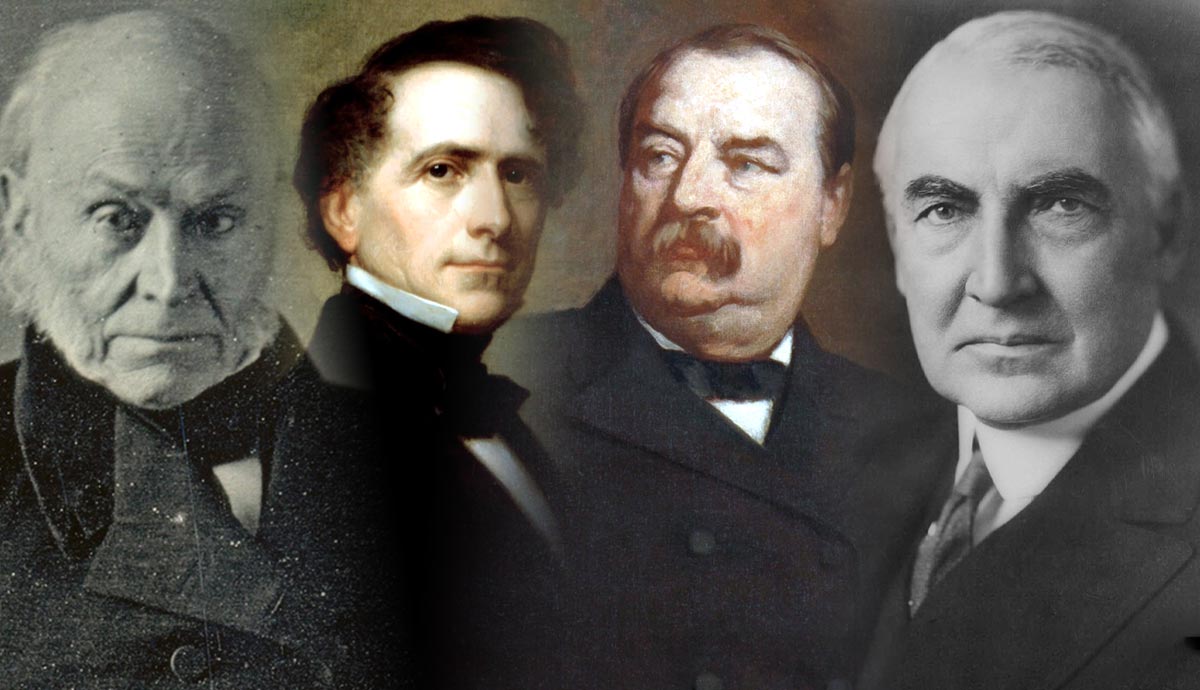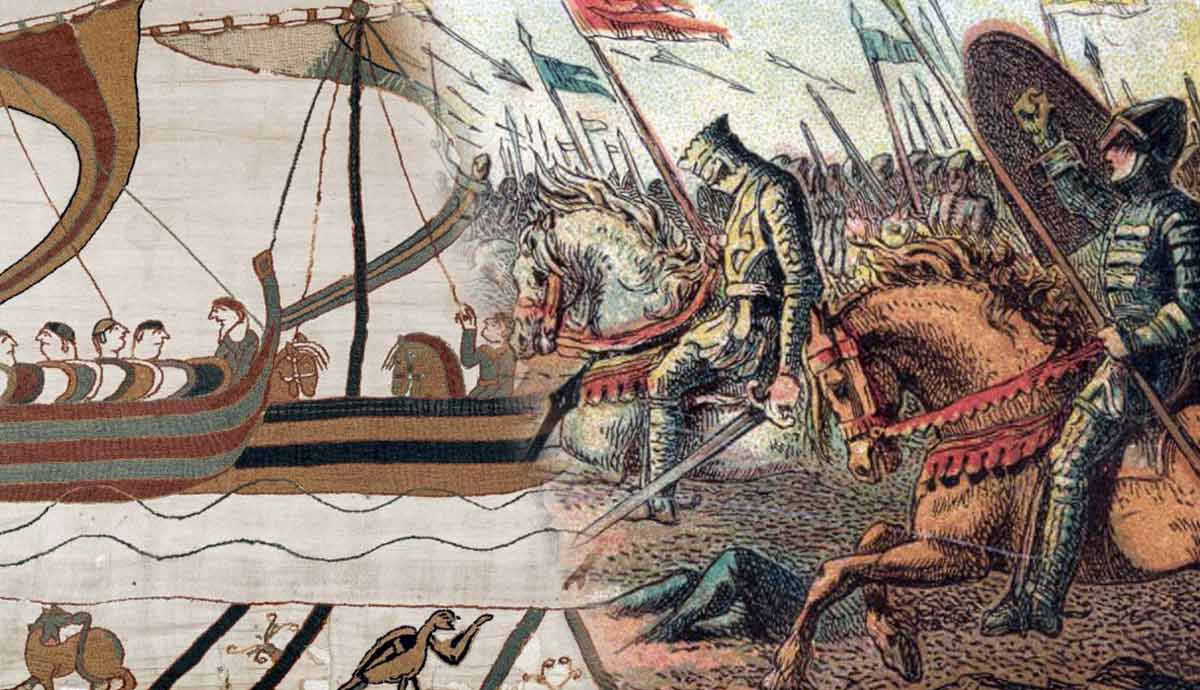
Of our nation’s 46 presidents, who are the ten most forgotten? This is difficult, as some presidents are forgettable for different reasons. Some served only a short time before dying, while others served at least a full term in office but did very little. Others served a full term and accomplished some important things but are overshadowed by a more well-known chief executive who came either before or after. Some were truly inept, while others were highly skilled…and perhaps should be remembered better! Nevertheless, here are the top 10 commanders-in-chief who rarely make it into the history classes.
1. Gerald R. Ford (1974-76): Only Unelected President

Our most recently forgotten US president is former congressman Gerald R. Ford, a pleasant Midwesterner whom President Richard Nixon chose to be his new vice president in 1973. Nixon’s previous vice president, former governor Spiro T. Agnew, had resigned over corruption charges. Ford held the vice presidency for less than a year when Nixon himself resigned due to the Watergate scandal, making Ford the first and only president to have never been elected as either president or vice president.
Ford was a nice guy but likely sank his chances at an independent term in the White House when he pardoned his predecessor. The pardoning of Nixon sapped Ford’s support in the 1976 presidential election, where he barely held on to the Republican nomination. Ford lost to Democratic nominee Jimmy Carter, ending his tenure in the Oval Office at two-and-a-half years. During this time, the US suffered from a drab economy and watched the communists win the Vietnam War, making few recall the brief Ford era with any fondness.
2. Warren G. Harding (1921-23): Return to Normalcy

In 1920, US President Woodrow Wilson was weakened by a stroke and lost his chance to become the first three-term chief executive, which might have been possible due to his leading America through World War I. Both parties selected newspaper editors from Ohio as their presidential nominees…and Republican Warren G. Harding won the election. Harding was a kind man but not highly energetic or memorable. He personally supported the League of Nations, which Wilson had championed, but his statements on the major political topic were unclear, beginning perhaps a trend of forgettable-ness.
Harding largely followed policies set by others when working his way up through the machine politics of the turn of the century. As a member of the US Senate, to which he was elected in 1914, Harding described it as a “pleasant place.” When running for president, Harding was famous for his “Return to Normalcy” campaign, urging Americans to return their efforts to domestic affairs and the economy. While Wilson’s brief tenure before his 1923 death from a heart attack was not memorable, it did set the stage for the Roaring Twenties—for which Republican successors Calvin Coolidge (1923-28) and Herbert Hoover (1929-32) are much better known.
3. William McKinley (1897-1901): Least Remembered Wartime President

Of the forgotten presidents, William McKinley may have been the most influential. After all, he presided over the Spanish-American War and the Boxer Rebellion in China, solidifying America’s status as a world power. Critics sometimes characterized McKinley as naive and in the pockets of powerful businessmen, such as Marcus Alonzo Hanna. In his 1896 campaign, McKinley ran a relaxed campaign while funded by Hanna, winning over Democratic nominee William Jennings Bryan. McKinley won a second term in 1900, coming on the heels of his victory in the Spanish-American War and making him a rarity among forgotten presidents.
While McKinley’s sedate campaigning made him forgettable, most of his erasure from public memory simply came from being overshadowed by his successor, Theodore Roosevelt. The New York governor was a renowned war hero from the recent Spanish-American War. He was chosen as the vice presidential nominee by the Republicans to—allegedly—get him out of New York politics. “Teddy” Roosevelt’s presidential tenure as a Progressive Era champion and status as a war hero largely erases McKinley from view. Mentions of the Spanish-American War naturally shift to Teddy Roosevelt, whose aggressive and commanding nature makes him more interesting to most readers of history.
4. Grover Cleveland (1885-88 & 1893-96): Only Non-Consecutive President

Grover Cleveland was a simple man who served as a “compromise candidate” among reform-minded Democrats and Republicans. The Democratic governor of New York won the 1884 election as America’s first unmarried president—though he did wed while in office. Cleveland found the White House life too pretentious for his liking and fought to reduce excessive government spending while chief executive. He was personally popular with many voters and politicians but often angered members of his own party and sought to remain nonpartisan.
In 1888, Cleveland lost re-election in the Electoral College, though he won the popular vote. Four years later, Cleveland won a second term, becoming the first non-consecutive president in US history. Unfortunately, the Panic of 1893 caused the worst economic recession until the Great Depression. This tumult ended Cleveland’s chance of winning a third term in 1896. Although occasionally remembered for bits of trivia (non-consecutive terms and only president to wed while in office), Cleveland is largely forgotten.
5. Chester A. Arthur (1881-84): Unexpected Replacement

Like several other forgotten presidents, Chester A. Arthur was a vice president who was suddenly thrust into the limelight. Arthur may be forgotten to history due to his staunch support for the spoils system, despite being the running mate of the man later known for beginning the end of the spoils system! When President James Garfield was assassinated in 1881, Congress took on Garfield’s campaign against the spoils system and machine politics. Vice President Arthur, now chief executive, nobly agreed to take on Garfield’s cause.
Arthur is largely forgotten due to the credit given to his elected predecessor, James Garfield, for civil service reform. The president was also not chosen as his party’s nominee in 1884, for which he did not actively campaign. It turned out that Arthur was suffering from fatal kidney disease and did not believe he would survive a second term. Ultimately, Arthur passed away in 1886, halfway through what might have been a second term. Although largely forgotten, Arthur’s belated support for civil service reform won him widespread respect when his term ended in March 1885.
6. James Buchanan (1857-60): Failed to Stop the Civil War

James Buchanan was a diplomat who served as US minister to Russia (1832-33) and Britain (1853-56), as well as Secretary of State under President James Polk. In 1856, Buchanan was seen as a “compromise candidate” between Northerners and Southerners: he was a Northerner with Southern sympathies. As a Democrat, he won the 1856 presidential election against rather inept Republican campaigner John C. Fremont. Although Buchanan was alarmed at the growing furor over slavery, he was personally sympathetic to enslavers.
Buchanan largely lost power within his own party during his single term in office and was criticized for doing nothing to try and unify a nation that was splitting. The former diplomat from Pennsylvania is largely forgotten as a chief executive due to the titanic legacy of his successor, Abraham Lincoln. So great and terrible was the American Civil War (1861-65) that it largely overshadows the few single-term presidents whose relative inaction led up to its eruption.
7. Franklin Pierce (1853-56): Run-Up to the Civil War

James Buchanan did little to stop the American Civil War, and neither did his predecessor, Franklin Pierce. Both men were similar in that they were Northerners with Southern sympathies. Pierce became the 1852 Democratic presidential nominee as a relatively unknown “dark horse” candidate after well-known rivals were removed from consideration. In office, Pierce continued with westward expansion of the United States in the aftermath of the Mexican-American War, fanning the flames of debates over the expansion of slavery into new territories.
Although Pierce’s administration completed the Gadsden Purchase and set the final borders of the continental United States, other foreign policy maneuvers, such as attempting to purchase Cuba, were unsuccessful. Pierce was unexpectedly denied his party’s nomination in 1856 and ended his presidency bitterly. Like Buchanan, Pierce’s presidency is largely forgotten in favor of coverage of the Civil War itself and the far more eventful presidency of Abraham Lincoln.
8. Millard Fillmore (1850-52): Weak Mid-Term Replacement

Like Buchanan and Pierce, Millard Fillmore is often seen as a rather weak president who did nothing to provide leadership over the divisive issue of slavery in the run-up to the American Civil War. Fillmore was vice president to Whig Party US President Zachary Taylor but was added as a ticket-balancer and thus not seen as a true Whig. When President Taylor died suddenly in 1850, Fillmore became president…and Taylor’s Cabinet resigned! Legislatively, much of Fillmore’s time was devoted to the compromises needed after the Mexican-American War to add new territory to the Union.
Taylor presided over the Compromise of 1850, which determined that slave-or-free status in the new territories would be the result of popular sovereignty (popular votes). In exchange for abolishing the slave trade in Washington DC, a federal fugitive slave act was passed, requiring escaped slaves who made it to free territory to be returned to their owners in the South. Unfortunately, allowing slavery in the new territories to be determined by popular vote led to violence as radical supporters of both sides flocked to the territories and fought. Ultimately, Fillmore was denied re-nomination by the Whig Party in 1852.
9. William Henry Harrison (1841): Shortest Tenure

Oh, what might have been? Our ninth most forgotten US president is so because of his record-short tenure: only 32 days in the White House. William Henry Harrison was a military officer who fought the Native Americans in Indiana, which was about as far west as America extended at the time, and became Governor of the Indiana Territory. He fought at the famous Battle of Tippecanoe, leading to his 1840 campaign slogan, “Tippecanoe and Tyler, Too!” Tyler referred to his running mate, John Tyler, who would soon replace him.
Harrison also won accolades for his performance in the War of 1812, which helped him win the presidential nomination of the Whig Party—which was, ironically, anti-war. Immediately upon becoming president in March of 1841, Harrison caught a cold…which turned into pneumonia. He died on April 4, 1841, becoming the shortest-tenured president in history. As a result, few readers of history remember William Henry Harrison today aside from that bit of trivia.
10. John Quincy Adams (1825-28): Lost the Popular Vote and the Electoral Vote!

The tenth and final most forgotten US president is likely so because he won the White House in the most controversial way. In 1824, four relatively popular candidates ran for the presidency, all from the Democratic-Republican Party. John Quincy Adams, son of second US president John Adams, came in second in the popular vote, trailing winner Andrew Jackson by a considerable margin. However, Jackson’s lead in the Electoral College was not a majority, sending the entire election to the US House of Representatives, which chose John Quincy Adams.

John Quincy Adams is a largely forgotten president due to his status as the first chief executive who was not a Founding Father. His immediate predecessor, James Monroe, was the last president to have been a Revolutionary War veteran or political figure. Adams’ forgettable-ness also stems from the intense focus on his aggressive and popular successor, Andrew Jackson, who won a landslide in 1828. The era of Jacksonian Democracy often completely overshadows John Quincy Adams, whose claim to fame is being the last president chosen by the House of Representatives.










